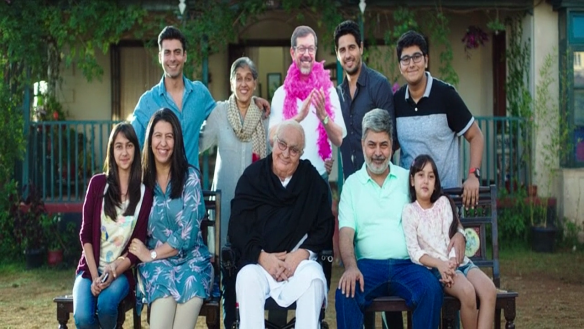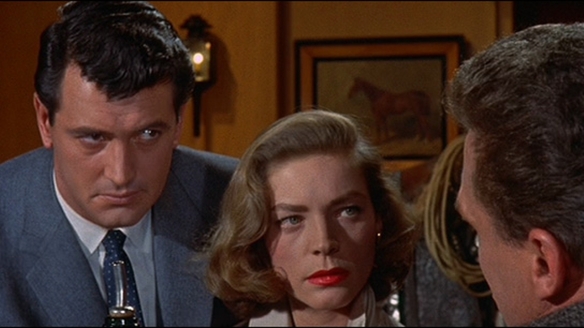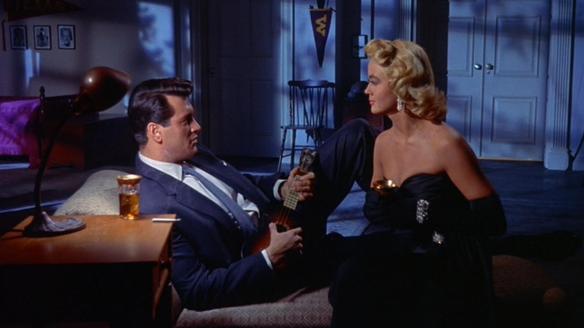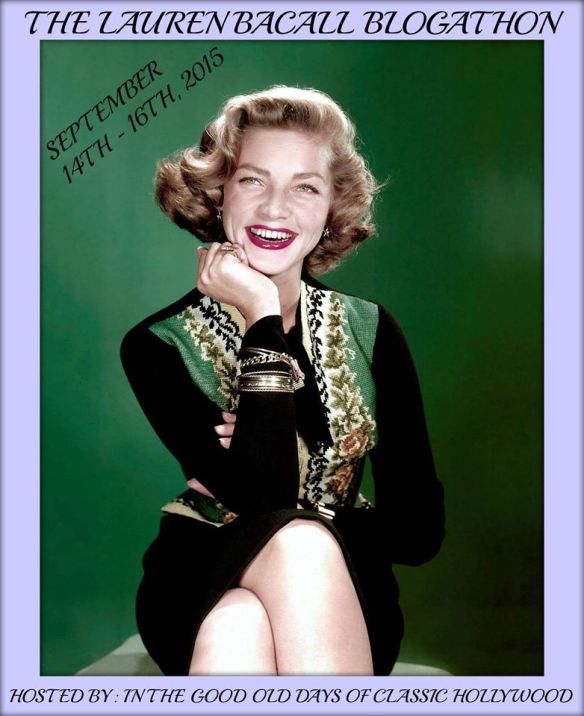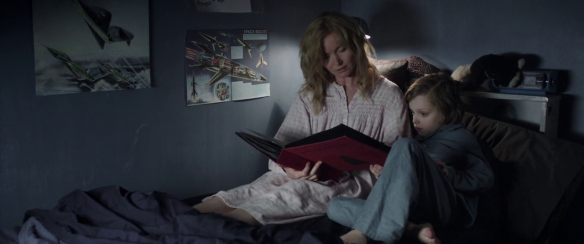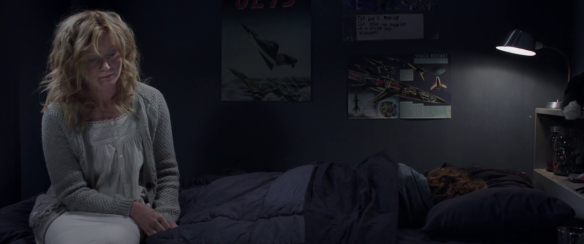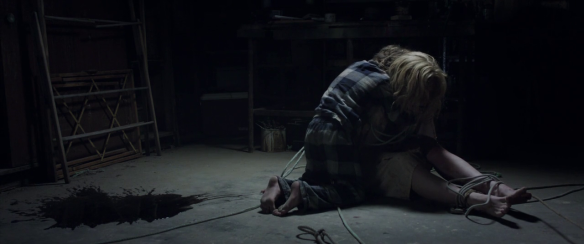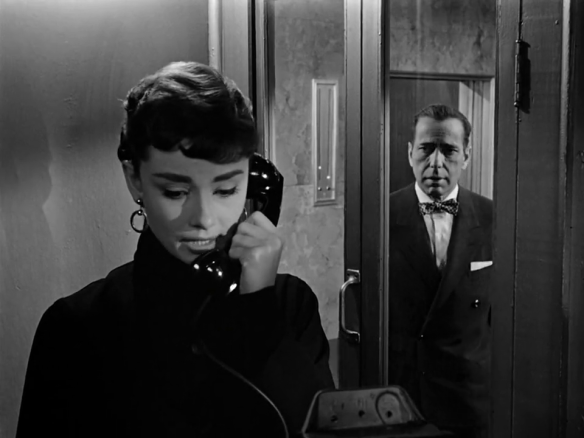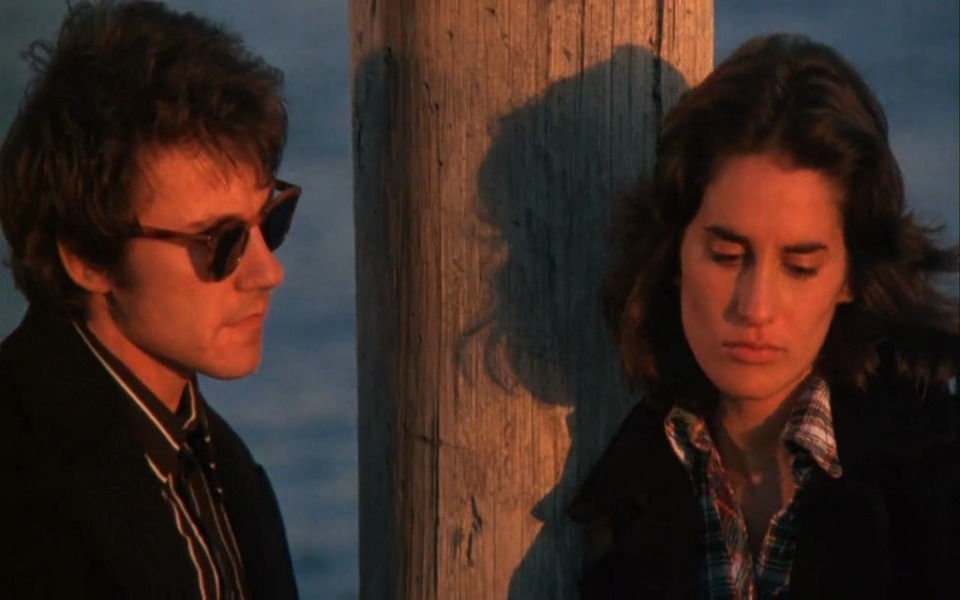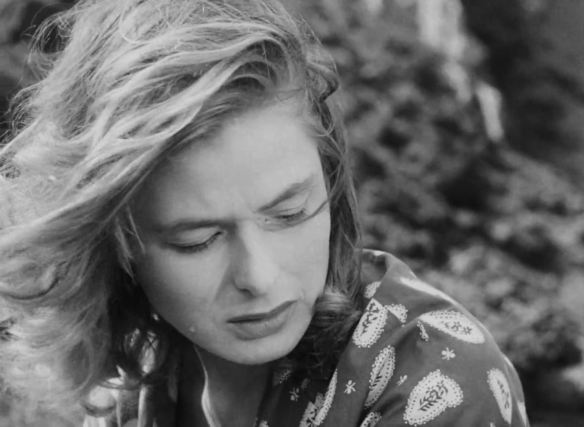
Ingrid Bergman in Stromboli(1950)
Stromboli (1950, Italy)
Director: Roberto Rossellini
Starring: Ingrid Bergman (Karin), Mario Vitale (Antonio), Renzo Cesena (The Priest) and Mario Sponzo as The Man from the Lighthouse.
The Priest: “God helps those, who help themselves.”As the proverb goes
Karin: “God has never helped me”.
At the end of Stromboli, Karin screams and implores for the divine help in utter helplessness. Rossellini is only interested to see whether she cries or not. She does.
Roberto Rossellini’s first collaboration with Ingrid Bergman is an intriguing and fascinating character study of a flawed and an opportunistic woman. It works even better when you realize how shrewdly Rossellini correlates the predicament of Karin with the plight of a Hollywood star who is somehow stuck in the rustic and ‘filthy’ (The adjective used by Bergman’s character to describe her house in Stromboli) world of Italian neorealism. The comforts of the studio sets are a distant thing now and the aridness and desolation of the ‘reality’ are daunting. All of these are done with a tinge of dark humor and satire.
The movie begins in a refugee camp in Italy, just after the Second World War, where the displaced refugees are kept and it is surrounded by a military compound filled with battered and exhausted prisoners of war. The women in the refugee camp have nothing much to do, except to wait or find a way out .We are shown that many of them are involved in romances with the soldiers through the barbed wire separating the two compounds. We are introduced to Karin here, who is trying to find a way out of this camp in any possible way .She has a reputation of a liar and so everything she says about her past is not exactly a credible one. We get an idea that she has been fleeing across different countries in Europe, chased by the Gestapo before finding her way here but we can’t really trust her narrative.
Karin too has a soldier, Antonio who says that he is crazy about her and proposes her to marry him. In an amazing scene, we see them trying to kiss each other across the barbed wire without getting injured and failing to do so. It works both as a symbolism for the particular period of time as well as a foreboding of the subsequent thorny relationship that they are going to share.
She obliges to Antonio’s proposal after her plan to migrate to Argentina goes kaput. This marriage is born out of circumstance instead of love. Rossellini builds intrigue and suspense by telling us as little about the newlyweds as he can before they arrive at the volcanic Stromboli Island-It is a part of the Aeolian Islands, along the Tyrrhenian sea- in the Northern Sicily. The volcano is active and threatens to erupt anytime. We are introduced to the other significant characters like the Island’s priest and trustee, the man working at the lighthouse and Antonio’s aunt and nephews.
The priest tells us a little about the Island and how most of its inhabitants have either left or waiting to leave. Karin is horrified listening to all of these and is infuriated after seeing Antonio’s derelict house. She mocks Antonio’s life and insults him for his lack of wealth.
We get to know that she has always been around riches all her life in the Baltics region and this sudden change of fate is something which is totally unacceptable to her. Karin hates her life on the Island and finds herself more trapped than she was at the refugee camp.
Still, Karin tries to adjust in Stromboli after seeing Antonio’s devotion and relentless efforts for keeping her happy but is unable to cope up with the overall conservative of society of the place, who consider her flamboyance and sensibility as immoral and shameful. Karin through a series of not so thoughtful and scandalous actions -going to the prostitute’s house of the island or getting embarrassingly close to the lighthouse keeper in front of the entire women folks of the island – makes the situation worse for herself and for Antonio.
It is astonishing to see how far Rossellini and Bergman were subverting the so-called traditional morality of female characters of that time, and one can only imagine the scandal it must have caused as we see the married Karin seducing not only the lighthouse keeper but also the Priest to get what she wants- a way to escape from the Island.
Ingrid Bergman plays an extremely demanding role in a not-so-comfortable territory and shows enormous courage to shatter her image of morality, purity, and righteousness that was built over years due to her roles as Joan of Arc or as Sister Benedict in The Bells of St.Mary’s with a wrecking ball.It’s ironic to see her character plead for courage at the end of the film. Ingrid Bergman is at her best when she plays characters who are full of secrets and conceal much more than they reveal.After Stromboli,she ended up doing two more movies with Rossellini-Europa ’51(1952) and the masterpiece Journey to Italy(1954). All three movies are an essential and exciting watch,all the more because of how it tries to blur the gap between real and reel life.
Karin is a selfish,not-so-wise opportunist who would go any far to get what she wants,and still, we feel empathetic to her. A woman who had lived in high-class societies and had been pampered all her life isn’t able to accept Stromboli as her own, and in return, Stromboli doesn’t accept her. Antonio is – as the Priest said- a simple and a good man – and does tries to stand up for his wife , even when his wife’s actions makes him an outcast in his own land.Though, he is intellectually inept to understand Karin’s behavior and this leads him to react in a brusque and violent manner.
There are many reasons why Stromboli works whether it’s the assured direction of Rossellini, the amazing background score by his brother Reno or the excellent black and white photography of the great Otello Martelli (“La Strada”,”Paisa”). The main reason for its success though obviously lies in the brave performance of one of the finest actresses in the history of cinema. Ingrid cares for Karin and so do we eventually.
This post is part of the Ingrid Bergman Blogathon hosted by the Ingrid Bergman devotee Virginie Pronovost of The Wonderful World of Cinema.




